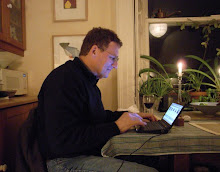 Meteorologists work with models whereby they factor in variables to project consequent effects. But tornadoes, like earthquakes, defy prediction, so the models don't work, at least not well.
Meteorologists work with models whereby they factor in variables to project consequent effects. But tornadoes, like earthquakes, defy prediction, so the models don't work, at least not well.Scientists, unlike their critics, prefer not to say things they can't substantiate, and therefore they are reluctant to attribute this season's terrible spate of tornadoes to global climate change. As Andrew Revkin put it in his New York Times science blog: "...a combination of imprecise records and deep complexity in the mix of forces that generate killer tornadoes has clouded any link to global warming. Anyone implying such a connection is in the spin zone."
About the truest thing we can say of tornadoes is that they are mysterious. For those who haven't experienced one, they often happen on sultry days for which the initial winds come as a relief. The rain may not be heavy, but the clouds gather as if to make an assault, and then the sky turns green, an effect so eerie as to turn the earth itself into a stranger. As for the noise, I don't know whether Doppler effect is an accurate description of what happens next, but the crescendo and its approach are more prolonged than the diminuendo. And once it's gone, the day can seem incongruently mild and calm.
I have been spared a direct hit by a funnel cloud. This month, tens of thousands of people in the southern states were not so fortunate, and over three hundred lost their lives.
California artist John Brosio has made a specialty of painting tornadoes. They touch down outside of villages in which Edward Hopper might have felt at home. In Brosio's paintings, the incongruence that I spoke of is present, as people seem blithely unaware of what is happening a mile or two away, perhaps not even questioning why their lights shine so brightly in the daytime.
It's hard not to think of tornadoes metaphorically, remembering that God appears as a column of smoke leading the Hebrews through the desert and speaks to Job from the whirlwind. But why stop at metaphor? If global change is right, the earth is trapping too much energy, leaving us with a malevolent force that resides on our landscape whether we notice it or not.
Island 2 by John Brosio, 2002. Click on the picture for a closer look.





